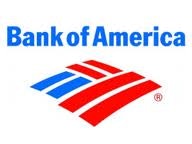If you mention the name JPMorgan Chase & Co. (NYSE:JPM) and ask what keeps investors up at night, you’ll likely hear something about potential trading losses. This makes sense because of the very public problems the bank had with this business before. However, there are two more obvious problems that are staring investors right in the face. These two problems have the potential to not only hurt J.P. Morgan’s balance sheet, but also could put a damper on future earnings growth.
Customers Are Not Fleeing As We Have Been Led To Believe
Though banks like J.P. Morgan are involved in other businesses, two of their core businesses are attracting deposits and making loans. Having worked in a bank for many years, I can tell you first hand that most banks would list deposit gathering and lending as two of their top priorities. What is really interesting is, how quickly some of the largest banks have turned around in these two areas.

Here Are The 2 Problems
Unfortunately, the same positive trend is not occurring on the lending side of the balance sheet. In fact, in the current quarter, only two of these four banks showed loan growth. In this area, Citigroup was surprisingly the strongest performer with loans up 7% year-over-year. Wells Fargo managed average loan growth of just 2.42%.
By comparison, Bank of America struggled with consistency. The bank did report first lien production increased 6%, and Global Wealth loans were up 6.2%, but consumer real estate loans were down 16.31%. J.P. Morgan reported that overall loans were down 5%.
The challenge this creates is, J.P. Morgan is attracting new deposits, which in theory provide a cheap source of funding for new loans. However, if the bank isn’t able to grow its portfolio, they are forced to invest these deposits into lower yielding products. Instead of making a home equity loan at say 5%, the bank instead has to accept investment options like short-term bonds paying next to nothing. In the short-term this can put pressure on the bank’s net interest margin, and make earnings growth harder to come by.
An even bigger issue for J.P. Morgan is, their credit quality is slipping. Though many banks have seen their non-performing loan percentage decrease over the last year or so, J.P. Morgan’s percentage has actually increased. Just for point of comparison, Bank of America’s non-performing loans were 2.62%, Citigroup came in at 1.93%, and Wells Fargo reported 2.56%. J.P. Morgan on the other hand, had the highest percentage at 3.12%, but that’s just the tip of the iceberg.
Over the last five quarters, J.P. Morgan’s non-performing loan percentage shows a disturbing trend:
| Quarter | Q4 – 2011 | Q1 – 2012 | Q2 – 2012 | Q3 – 2012 | Q4 – 2012 |
| Non-Performing Loan % | 2.44% | 2.82% | 2.72% | 3.23% | 3.12% |
As you can see, though the percentage has decreased sometimes from quarter to quarter, overall the trend is not positive.
So What Now?
If you own J.P. Morgan shares and have the option to jump ship, I would seriously consider doing so. Analysts are calling for 6.45% EPS growth from the bank in the next few years, and this is the lowest growth rate of the banks we have looked at.
On a point to point comparison, Wells Fargo just looks like a better deal than J.P. Morgan. Wells Fargo has a higher yield (2.86% versus 2.54%), faster expected growth (9.1% versus 6.45%), better mix of deposit and loan growth, and a lower percentage of non-performing loans. Since the two banks have P/E ratios of 8.8 for J.P. Morgan and 9.6 at Wells Fargo, this isn’t enough of a discount to consider J.P. Morgan.
Of the two turnaround stories, Citigroup actually seems like the better option. They have better organic growth with 7% growth in both deposits and loans. They also have a lower non-performing percentage, and as they dispose of the Citi Holdings assets, their credit quality will get even better. Bank of America is expected to grow earnings at a faster rate (over 18%), but they are still struggling with consistent loan growth. No matter what option you choose, I would avoid J.P. Morgan. The two worries of negative loan growth and diminished credit quality are significant. Until the bank can get these issues under control, there are better options, and investors should look elsewhere.
The article 2 Problems Show This Bank Is Slipping originally appeared on Fool.com and is written by Chad Henage.
Copyright © 1995 – 2013 The Motley Fool, LLC. All rights reserved. The Motley Fool has a disclosure policy.




